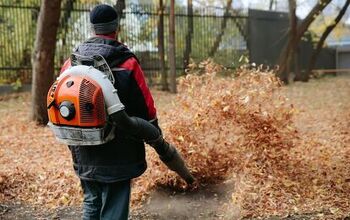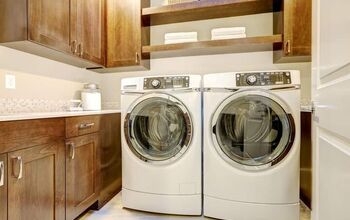Craftsman Snow Blower Won't Start? (Possible Causes & Fixes)

When winter hits and the snow starts to fall, nothing is quite as valuable as a Craftsman snowblower to keep your driveway and other areas clear. However, when the first snowfall comes, what if your machine doesn’t start? You’ll have to troubleshoot the problem and see how to fix it.
The most common reasons why a Craftsman snowblower won’t start are a faulty spark plug or carburetor. Changing a spark plug on a snowblower is relatively easy, but putting a new carburetor on it can be somewhat complicated. Other potential issues could be the ignition coil or bad gasoline in the tank.
This article will outline each of these causes and their solutions in detail so that you won’t be stuck with a non-working snowblower this season.
Do You Need Appliance Repair Services?
Get free, zero-commitment quotes from pro contractors near you.

Top Reasons Why a Craftsman Snow Blower Won’t Start
Problem 1: Faulty Spark Plug
The spark plug is a crucial part of any engine, as it is what ignites the fuel and air mixture to start the engine. So, if your plug is cracked or corroded, it can’t do its job properly, which means that your machine won’t start. This problem is common in most small motors, whether it is a snowblower or lawnmower.
The Solution: Replace the Spark Plug
Most manufacturers recommend changing this component every season, particularly because snowblowers have to endure a lot of environmental wear and tear. So, if it’s been a while since you’ve changed it (if ever), follow these steps. You will need a spark plug socket and a gap tool before getting started, so if you don’t have these tools, buy them first.
Step One: Locate the Spark Plug. Fortunately, snowblower engines are small, so you don’t have to search too far to find each component. The plug is on the left side of the motor if you’re facing it from behind. Refer to your owner’s manual if you have trouble locating it.
Step Two: Remove the Plug. You will have to disconnect the spark plug wire from the engine. You will see the tip of the plug sticking out. Use a spark plug socket to loosen the piece and pull it out. If you use a regular socket, it could damage the component. Even though you’re changing it, you could damage the new one, which will force you to start over.
Turning left will loosen the plug while turning right will tighten it. If the plug doesn’t come out easily, don’t force it as it could break. Instead, spray some WD-40 or penetrating oil and let it sit for a few minutes.
Step Three: Gap Your New Plug. You’ll see two electrodes on the end that goes into the motor. One of the electrodes is bent over the other. The gap between is crucial for fast and efficient starting. If the space is too wide, the spark may not connect. If it’s too close, it could wear the plug down faster.
You must buy a replacement plug that matches the original exactly. By doing this, you don’t have to gap the new model much, if at all. Simply fit the tool between the electrodes – if there is slight resistance when pulling it out, you don’t have to do anything. Tap on the end if it’s too wide or use the tip of a screwdriver to pry it open if it’s too tight.
Step Four: Install the New Spark Plug. Set the component into the engine and then tighten it with your spark plug socket. One half-turn should be good enough. If you over-tighten the plug, you could crack it or make it harder to remove next time.
Step Five: Start the Snowblower. If the blower starts immediately, then you know that the plug was the problem. If it is still having trouble, move onto the next section.
Problem 2: Dirty Carburetor
Like the spark plug, your snowblower’s carburetor is crucial. This component is responsible for mixing the fuel and air so that it will combust properly. One of the most common issues with a carburetor is that it gets sticky and dirty. As gasoline evaporates, it leaves a gummy residue, preventing the carb from opening and closing properly. So, in most cases, all you have to do is clean this piece, and it should start working again.
The Solution: Clean or Replace the Carburetor
You will need to buy some carburetor cleaner to do this job, and you’ll need a socket wrench set and a towel. It also helps if you use a small air hose to get into the carburetor’s nooks and crannies. We also recommend buying a carb replacement kit, which will have new pieces to replace any old ones that are rusted or excessively dirty.
Step One: Remove the Carburetor Cover. This piece is on the left side of the engine. You will need a socket wrench to pull it off.
Step two: Pinch the Fuel Line. You will want to make sure that gas doesn’t get into your carb while you’re working on it.
Step Three: Remove the Carburetor Bowl. On the bottom of the carb is a metal bowl that allows fuel to collect. There is a single bolt holding this in place, so you just have to loosen that to pull the component off. Inspect it to see if it is full of sludge and grime. If so, you will want to soak it in carb cleaner before putting it back.
Step Four: Spray the Carburetor. Unless this component is caked with sludge, you should be able to clean it thoroughly without removing the whole thing. Use a thin spray nozzle to get inside the carburetor to clean out any debris. After spraying it, you should let it sit for a few minutes before wiping it down with a towel.
Step Five: Scrub the Carburetor. You can use a small piece of sandpaper to remove any rust or grime. You will want to get all visible surfaces as clean as possible before resetting your engine.
Step Six: Replace the Bowl. Reattach the bowl using the bolt and nut.
Step Seven: Un-Pinch the Fuel Line. Make sure that there are no cracks in the line afterward.
Step Eight: Replace the Carburetor Cover. It’s also a good idea to scrub this piece down if there is any rust or dirt on it.
Step Nine: Start the Blower. If the machine still doesn’t start, move onto the next section.
Problem 4: Faulty Ignition Coil
When you pull the cord to start the snowblower, it engages the ignition coil, which activates the spark plug. If the coil is worn or damaged, it won’t work correctly, so the blower won’t start at all.
The Solution: Replace Your Ignition Coil
This repair is relatively complicated, so you will want to take your snowblower to a repair technician. The tech can identify whether the coil is the problem and install a new one correctly.
If Nothing Else Works: Watch This Video
Other Potential Reasons for a Non-Starting Snowblower
If all of these repairs are not allowing your snowblower to start, the problem could be one of the following:
- Bad Gasoline – If the tank has been sitting full for months, the gas inside likely has separated, so it won’t combust properly. We recommend draining your tank before storing the snowblower in the spring. Alternatively, you can add a fuel stabilizer so that the gas will stay fresh for longer.
- Bad Stop Switch – This switch helps regulate the electric current through your blower’s engine. If the switch has stopped working, it won’t allow the machine to start. You will have to replace it, but it’s best to have a repair technician do it.
- Broken Recoil Starter Spring – There is a spring that allows the pull cord to retract fully. If this spring gets rusted, it will break, causing the cord to stay extended. You will have to replace the whole recoil starter if this is the case. However, it’s easy to tell if the starter is the problem since you won’t have as much resistance when pulling the cord, or it may not retract at all.
Do You Need Appliance Repair Services?
Get free, zero-commitment quotes from pro contractors near you.

Related Questions
My snowblower starts then dies; what’s wrong with it?
The carburetor is likely to blame, but the spark plug could be faulty as well. If your model has a fuel filter, that could also get clogged, which doesn’t allow gasoline to flow through the engine.
Are all snowblower models identical?
As a rule, most small engines are similar. The placement of specific components may shift, but the types of parts inside these motors won’t change. All snowblowers use an ignition system, a carburetor, and a pull cord.

We are a team of passionate homeowners, home improvement pros, and DIY enthusiasts who enjoy sharing home improvement, housekeeping, decorating, and more with other homeowners! Whether you're looking for a step-by-step guide on fixing an appliance or the cost of installing a fence, we've here to help.
More by Upgraded Home Team


















![12 Washing Machine Brands to Avoid [with Recall Data]](https://cdn-fastly.upgradedhome.com/media/2023/07/31/9075781/12-washing-machine-brands-to-avoid-with-recall-data.jpg?size=350x220)








